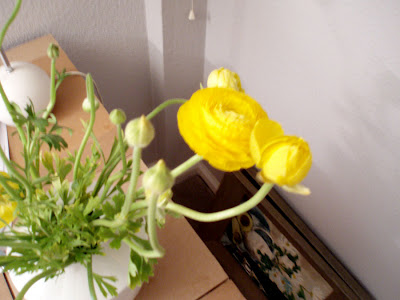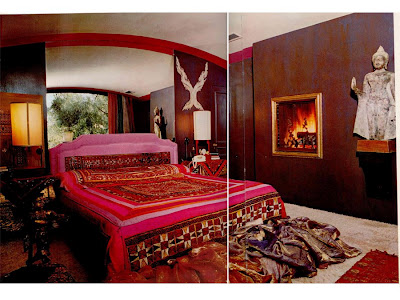Archive for

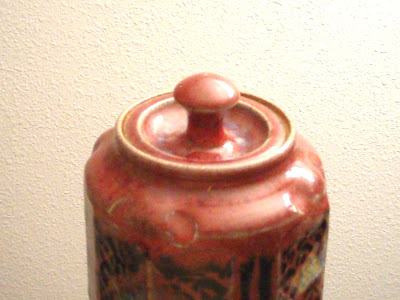

 Unfortunately (or fortunately–depending on how she used her time), Persephone had to stay underground for three months out of the year. My roommate’s sister has referred to our apartment as a cave. I did wish to be a spelunker having been fascinated at an early age by caves, but the problem with living in a cave is that it is damp. On top of living in a cave, as a friend pointed out today at lunch, to be located backed up against a hill in a slight valley doesn’t help matters. It is however Spring and I see the occasional hummingbird out my window as I type and the yellow Ranunculus I bought on Wed. are looking almost fresh. I finally got my CA driver’s license, and this morning I went hiking in Torrey Pines Reserve with my hiking companion who described to me the naming of Pinus Torreyana.
Unfortunately (or fortunately–depending on how she used her time), Persephone had to stay underground for three months out of the year. My roommate’s sister has referred to our apartment as a cave. I did wish to be a spelunker having been fascinated at an early age by caves, but the problem with living in a cave is that it is damp. On top of living in a cave, as a friend pointed out today at lunch, to be located backed up against a hill in a slight valley doesn’t help matters. It is however Spring and I see the occasional hummingbird out my window as I type and the yellow Ranunculus I bought on Wed. are looking almost fresh. I finally got my CA driver’s license, and this morning I went hiking in Torrey Pines Reserve with my hiking companion who described to me the naming of Pinus Torreyana. 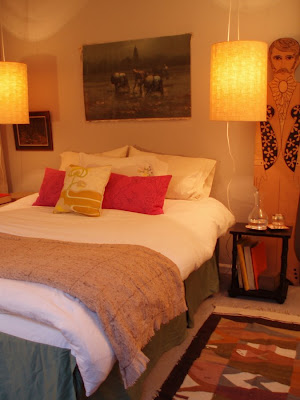 The pink rectangular pillows were custom made out of Princess 602 by Kvadrat. The yellow pillow is made out of a vintage memo sample from The Cresent’s home decor department circa 1970. In lieu of a headboard, (in process) the first figure of three of a tri-fold cardboard divider–a stage prop from the 70’s–is at the side. The painting is a vintage oil taken off it’s stretcher that a past client was going to throw out which is supposed to depict workers in what a friend told me are the rice paddies outside of Beijing. The building in the background is the Temple of Heaven. The small litho is a vintage still life.
The pink rectangular pillows were custom made out of Princess 602 by Kvadrat. The yellow pillow is made out of a vintage memo sample from The Cresent’s home decor department circa 1970. In lieu of a headboard, (in process) the first figure of three of a tri-fold cardboard divider–a stage prop from the 70’s–is at the side. The painting is a vintage oil taken off it’s stretcher that a past client was going to throw out which is supposed to depict workers in what a friend told me are the rice paddies outside of Beijing. The building in the background is the Temple of Heaven. The small litho is a vintage still life. My own personal style is a thoughtful editing of early and mid-century furniture and vintage pieces—a layering of textiles, patterns and art with a focus on reuse and reinvention.
Suitability; Simplicity; Proportion are the principles which guide me and can guide anyone to finding and enjoying beautiful objects and developing their own sense of good taste. These are Elsie de Wolfe’s guiding principles of good taste which developed from Edith Wharton and Ogeden Codman’s clasic, The Decoration of Houses. Let’s review the applicability of SSP today.
Suitability: pertains to the function of an item as in it should fulfill what it is meant to do. A table should function as a table. Further one could ask does it represent the personal style of the owner (or what they want it to be?) Can the owner understand it; relate to it–does it have a connotation that the owner can relate to beyond it’s utility? For example, is the object sustainable, ecologically sound, or will it be thrown out at the first whim or does it have an inherent value which can be traded on?
Simplicity: Is the object extraneous? Is it trying to be something that it is not? Is it trying to be clever or novel or does it have a substance of it’s own?
Proportion: Does the object work within the limits of the room that it is in and do the objects as a whole in the room work together to create balance?
In Elsie’s own words: “How can we develop taste? Some of us, alas, can never develop it, because we can never let go of shams. We must learn to recognize suitability, simplicity and proportion, and apply our knowledge to our needs. I grant you we may never fully appreciate the full balance of proportion, but we can exert our common sense and decide whether a thing is suitable; we can consult our conscience as to whether an object is simple, and we can train our eyes to recognize good and bad proportion… a woman’s environment will speak for her life, whether she likes it or not. How can we believe that a woman of sincerity of purpose will hang fake “works of art” on her walls, or satisfy herself with imitation velvets or silks? How can we attribute taste to a woman who permits paper floors and iron ceilings in her house? We are too afraid of the restful commonplaces, and yet if we live simple lives, why shouldn’t we be glad our houses are comfortably commonplace? How much better to have plain furniture that is comfortable, simple chintzes printed from old blocks, a few good prints, than all the sham things in the world? A house is a dead-give-away, anyhow, so you should arrange is so that the person who sees your personality in it will be reassured, not disconcerted.”
 After much selling of the beautifully made exquisitely executed perfectly soft and pristine leather which brought about ultimate comfort, the client decided –they wanted the Lou Hodges chair and ottoman.
After much selling of the beautifully made exquisitely executed perfectly soft and pristine leather which brought about ultimate comfort, the client decided –they wanted the Lou Hodges chair and ottoman. 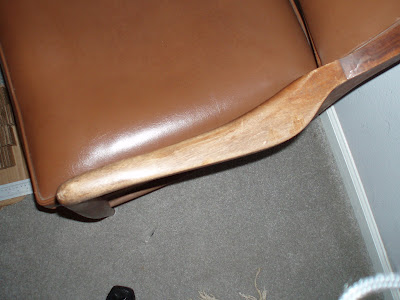
 We are work ing our way out of the boredom here at Bibelots. Perhaps it is a period-of-fruition; or perhaps it has been the tedious work, but the following quotes are assisting us on our way:
We are work ing our way out of the boredom here at Bibelots. Perhaps it is a period-of-fruition; or perhaps it has been the tedious work, but the following quotes are assisting us on our way: 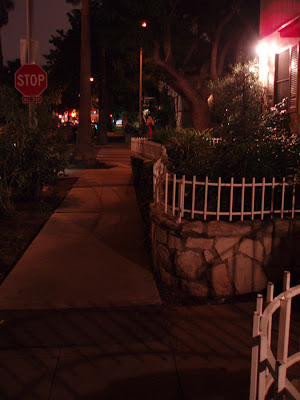 The fence is several buildings down from a friend’s apartment in West Hollywood. I love the curve which adds a flourish to the street. I am fascinated by the meanings of things. And when I walk by this fence I wonder if the white paint is a reference to some romanticized longing for suburbia. See Forbes on the topic of Green yards.
The fence is several buildings down from a friend’s apartment in West Hollywood. I love the curve which adds a flourish to the street. I am fascinated by the meanings of things. And when I walk by this fence I wonder if the white paint is a reference to some romanticized longing for suburbia. See Forbes on the topic of Green yards.
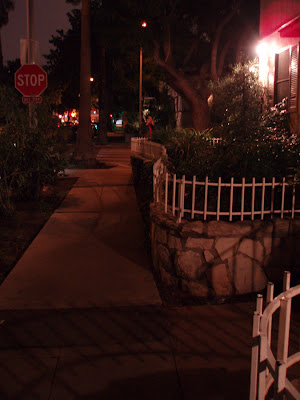 The fence is several buildings down from a friend’s apartment in West Hollywood. I love the curve which adds a flourish to the street. I am fascinated by the meanings of things. And when I walk by this fence I wonder if the white paint is a reference to some romanticized longing for suburbia. See Forbes on the topic of Green yards.
The fence is several buildings down from a friend’s apartment in West Hollywood. I love the curve which adds a flourish to the street. I am fascinated by the meanings of things. And when I walk by this fence I wonder if the white paint is a reference to some romanticized longing for suburbia. See Forbes on the topic of Green yards.
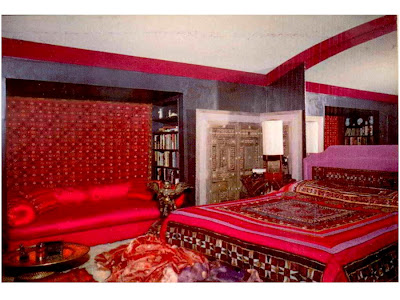

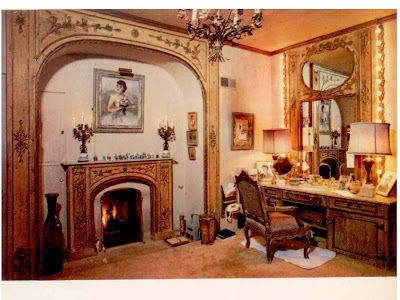
 Tony Duquette called his tablescapes, games of chance. I’ve loved this spread for awhile. I can’t decide why in particular. Tony Duquette was a protegee of Elsie de Wolfe, depending on who you ask. He did many light fixtures and if I recall some painted furniture for her home After All in Beverly Hills where she lived for a handful of years, which you can read about in Ludwig Bemelman’s memoir about his time with her there in To the One I Love Best. There she lived, as Duquette’s website reads, amongst the American royalty as she had to escape her beloved Versailles due to war. She pined for Versailles while she was there and if you see images of After All, it is very much designed, inexpensively (for her) as a stage set, with lino floors, fabrics and mirror and reproductions and grand sweeps of color. Elsie in tune with her own ideas of what was suitable as she was ready to make a break the moment she had a chance.
Tony Duquette called his tablescapes, games of chance. I’ve loved this spread for awhile. I can’t decide why in particular. Tony Duquette was a protegee of Elsie de Wolfe, depending on who you ask. He did many light fixtures and if I recall some painted furniture for her home After All in Beverly Hills where she lived for a handful of years, which you can read about in Ludwig Bemelman’s memoir about his time with her there in To the One I Love Best. There she lived, as Duquette’s website reads, amongst the American royalty as she had to escape her beloved Versailles due to war. She pined for Versailles while she was there and if you see images of After All, it is very much designed, inexpensively (for her) as a stage set, with lino floors, fabrics and mirror and reproductions and grand sweeps of color. Elsie in tune with her own ideas of what was suitable as she was ready to make a break the moment she had a chance. 
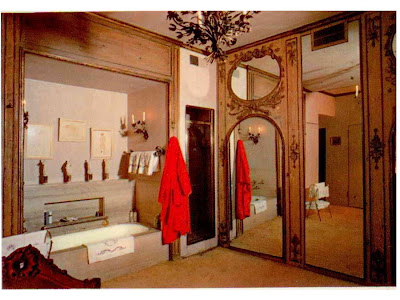
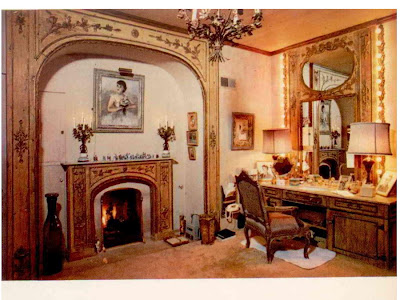
 Tony Duquette called his tablescapes, games of chance. I’ve loved this spread for awhile. I can’t decide why in particular. Tony Duquette was a protegee of Elsie de Wolfe, depending on who you ask. He did many light fixtures and if I recall some painted furniture for her home After All in Beverly Hills where she lived for a handful of years, which you can read about in Ludwig Bemelman’s memoir about his time with her there in To the One I Love Best. There she lived, as Duquette’s website reads, amongst the American royalty as she had to escape her beloved Versailles due to war. She pined for Versailles while she was there and if you see images of After All, it is very much designed, inexpensively (for her) as a stage set, with lino floors, fabrics and mirror and reproductions and grand sweeps of color. Elsie in tune with her own ideas of what was suitable as she was ready to make a break the moment she had a chance.
Tony Duquette called his tablescapes, games of chance. I’ve loved this spread for awhile. I can’t decide why in particular. Tony Duquette was a protegee of Elsie de Wolfe, depending on who you ask. He did many light fixtures and if I recall some painted furniture for her home After All in Beverly Hills where she lived for a handful of years, which you can read about in Ludwig Bemelman’s memoir about his time with her there in To the One I Love Best. There she lived, as Duquette’s website reads, amongst the American royalty as she had to escape her beloved Versailles due to war. She pined for Versailles while she was there and if you see images of After All, it is very much designed, inexpensively (for her) as a stage set, with lino floors, fabrics and mirror and reproductions and grand sweeps of color. Elsie in tune with her own ideas of what was suitable as she was ready to make a break the moment she had a chance. 
